Related Tags
Barry Grzebik of Grez Guitars: “Making guitars is not where you go to make a fabulous living. It’s where you go because you’re enjoying yourself”
A successful career in sound-system design and acoustical engineering might seem the long way round into guitar making. But it all kinda’ makes sense when high-end electric and flat-top acoustic instruments are the goal.

All images: Grez Guitars
Given the fervent reappreciation of upcycled catalogue-inspired guitars these past few years, Grez Guitars are well positioned to soar in the current marketplace, and the man behind them, Barry Grzebik, is primed to help them do so. In addition to redwood-topped flat-top acoustics and custom-spec archtops, Grez’s best-known guitars are likely those inspired by the simple retro styling of a Harmony Stratotone Jupiter or a Silvertone Speed Demon, but rendered with the utmost consideration for resonance, playability, components and overall quality of construction.
- READ MORE: Froggy Bottom Guitars: “Our entire methodology is created around the concept of flexibility”
As Grzebik himself puts it: “I want to make a high-quality, beautiful instrument, but I feel like it’s a little bit of a working man’s instrument too. It doesn’t aspire to be in a museum. It’s going to be on stage. And I think that comes from me just being out in the world working with musicians and sound engineers, and tours and live TV. You know, you make tools. It’s just sort of how I came up, I designed tools to get things done.”
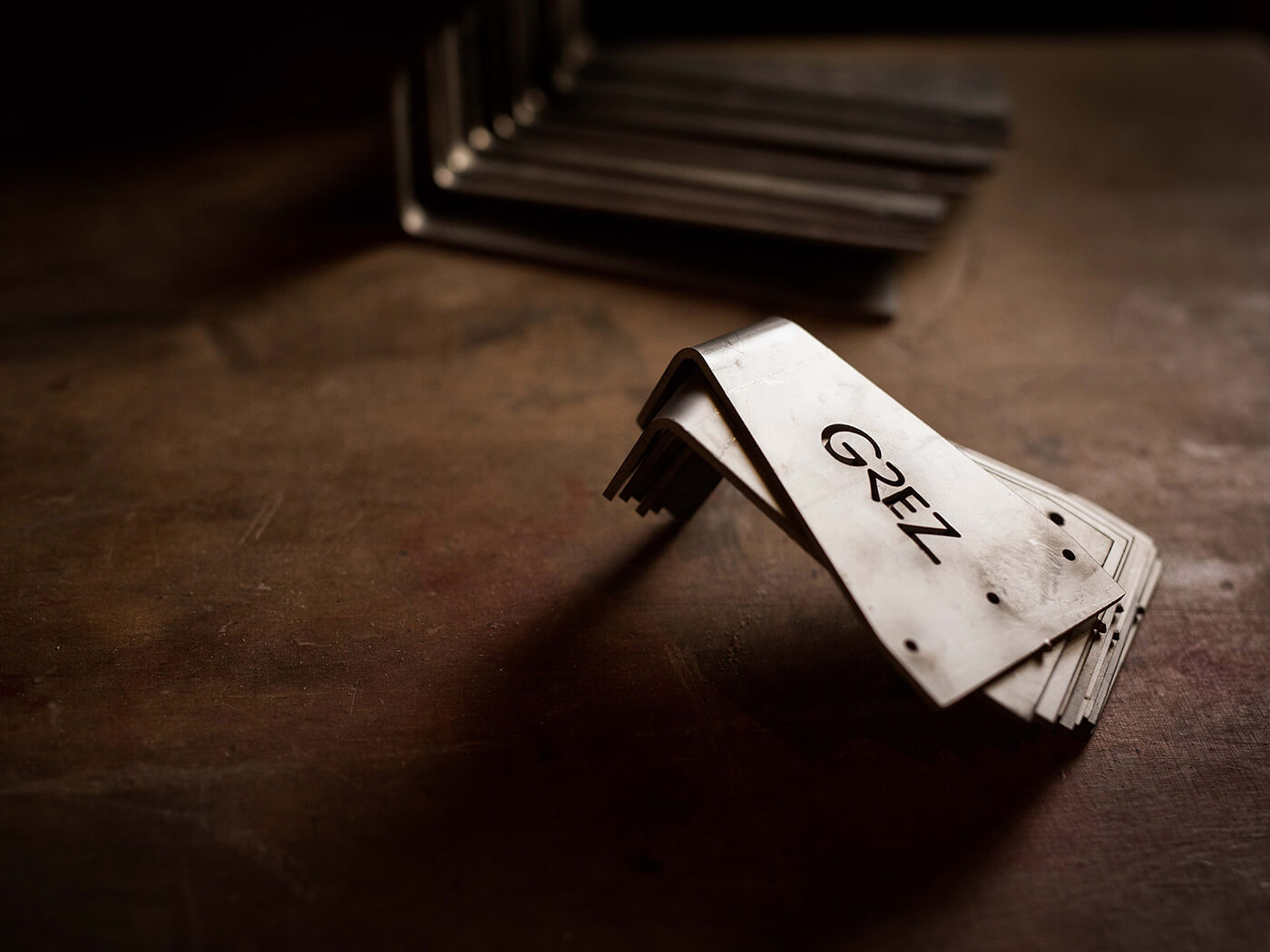
Sound design
After spending much of his youth in New Jersey, Grzebik moved to Northern California with his family at the age of 15, and has called the region home ever since. Obsessed with music in general and sound in particular as a teen, he forged a career in the live sound industry, working as a product designer for Apogee. Not only did the position find him designing loudspeakers, amplifiers and equalisers for massive commercial PA systems, but it took him all over the country, and the world, overseeing installations for events such as the Grammy Awards, the Oscars, the Olympic Games and Broadway shows.
“And what happened was sort of fortunate for me, I guess,” says Grzebik, “right place at the right time, you’d make these big sales to a performing arts centre or someplace somewhere in the world, so I got to show up at all kinds of interesting events. I did that for a long time and eventually became director of engineering at that company, and then we sold the company and I started a consulting firm. And I’ve been an acoustical consultant for a long time, as kind of a parallel path.
“If you make speakers for a living, people ask you, ‘What speaker should I use? Where should I put it? Does this sound right?’ And you kind of eventually realise that you can make a living telling people what to do, and not have to make the stuff. Because manufacturing can be a bit of a pain, having a factory full of people and parts. I knew I didn’t want to start another speaker company. That’s just way too big of an investment to start up in this climate. Instead of needing ten thousand dollars you need ten million dollars, if you want to start a real speaker company and be competitive. Too much hassle – investors, board of directors, and none of it’s any fun.”
Despite all the rational thinking, however, Grzebik still had a burning desire to make something, and it looked more and more like that something would be guitars. Without the foundation of the common path – build guitar in high school wood shop, study woodworking, obtain apprenticeship, launch your own brand – Grzebik found himself starting essentially from scratch, entering what he calls his ‘third career’ in early middle age.
“It just started out, you know,” he says, “the first year I just studied the topic intently: bought every book, watched every video, read every article. Just studied for a year. And then the second year I built one acoustic guitar, which is kind of an accomplishment as a personal thing, but you know, it’s not much in the industry [laughs]. Eventually you build some more, and a website goes up, and people start buying them, and here we are, struggling to keep up with sales!”
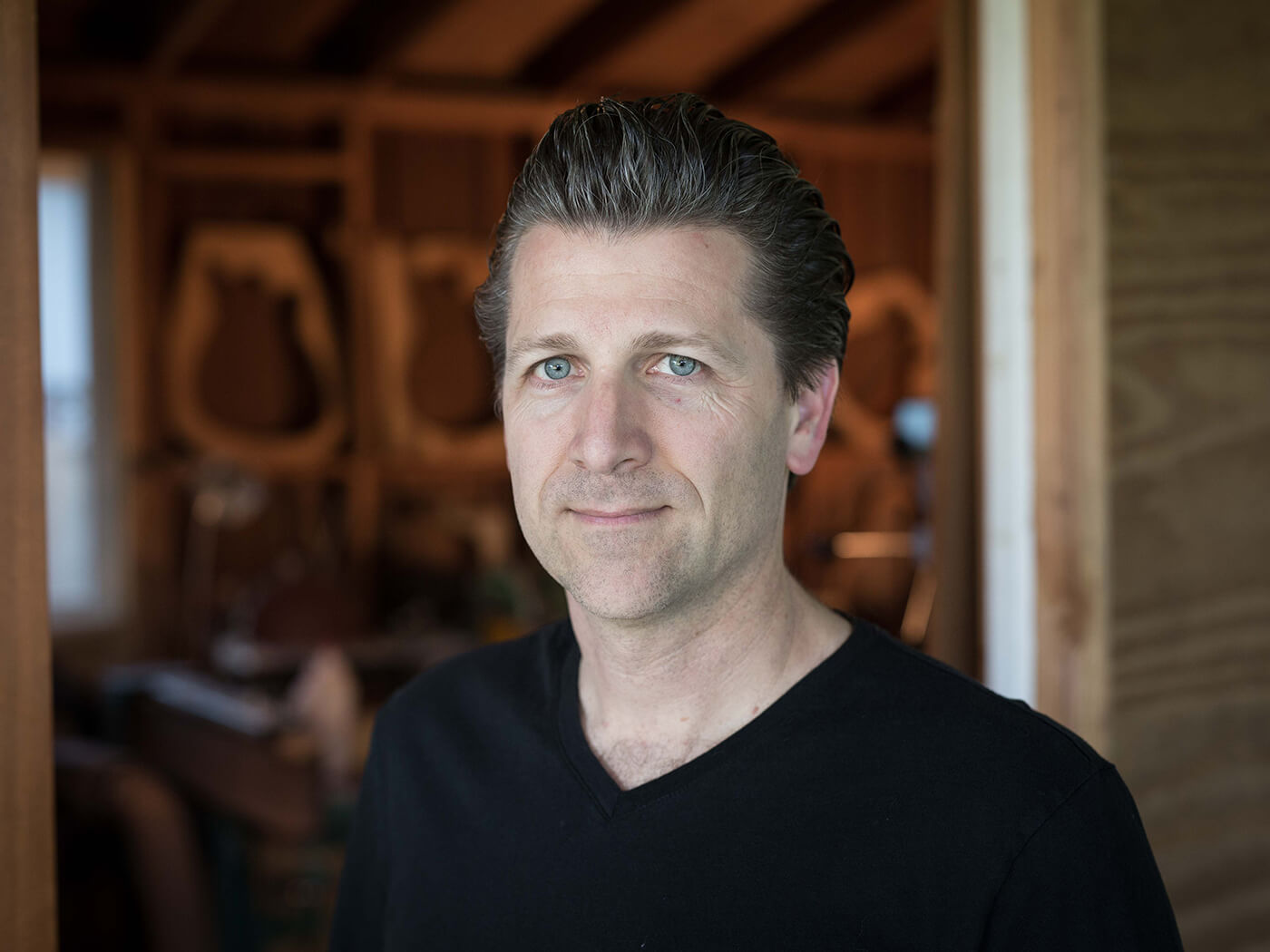
Acoustical engineering
While this is a tough and challenging industry for anyone to get into, Grzebik certainly had a leg up in his in-depth understanding of acoustic principles and product design in general. Which is to say, once the project got serious, he wasn’t just building guitars for the sake of it, but was building them to sound great.
“We all know that whether it’s being a musician or making guitars, this is not where you go to make a fabulous living,” he concedes. “It’s where you go because you’re enjoying yourself and you’re enjoying your co-workers and your peers, and it’s just a good place to be. And hopefully you can make a living at it somehow.
“But I’m a product designer, I know about materials and sound, and being an acoustician and designing loudspeakers, not that I have a ‘golden ear’ – that’s something you put in air quotes – but I have ‘an ear’ at least. I’ve made a living listening to things, and I know what sounds good and what doesn’t, not just to me, but I’ve made things that other people think sound good.
“So, for instance, if you’re designing a woofer, right? You’re looking at the cone, you’re deciding how stiff it is, how much it weighs. If you’re designing an acoustic guitar you’re looking at the top and talking about how stiff it is, and how much it weighs… you know, there’s just so much that overlaps.”
Even so, coming at it through the consideration and application of sound waves and acoustic principles rather than of woodworking and construction put Grzebik one a different path into the craft, and most would agree it shows in the final results.
“It’s a tricky thing,” he admits, “because if you come up through the normal channels you’re aspiring to be, I don’t know, John Monteleone or Linda Manzer, the top of the triangle, so you’re learning and you’re honing your skills to be able to make the perfect mitre joint or whatever. And all of that’s great, but to me that’s heading toward art guitars, and I’ve never really been all that excited about the high art of it, so much as the functionality of it.”
In taking his rigorous form-follows-function approach, Grzebik has boiled down the essential principles of an acoustically-virtuous guitar – be it an acoustic or electric instrument – to a certain design simplicity that often belies the level of thought that has gone into the end result. Which is to say, there’s more going on inside than first meets the eye from the outside.
“I don’t want things to look high-tech and crazy,” he confirms. “I mean, it can be interesting on the inside, but I still like that simple look on the outside. One of the things, for example, about the Mendocino, the way it’s designed and the way it’s assembled, is that it has very few glue joints in it. You can’t really tell that by looking at it, it’s just a guitar, but people obsess about glue, you know? ‘Is it hide glue? ‘Is it this glue or that glue?’ And that’s fine, but what if you almost have no glue joints? Then it doesn’t matter what kind of glue you use.
“There’s like three glue joints in the whole guitar, or something like that. So, that’s just like one tiny detail, but it’s a hidden thing about the instrument that makes it behave, in my opinion, maybe a little better or a little different. But if you look at it it’s just a simple, cleanly designed instrument. The little details that make it sing are not boldly shouting at you, they’re hiding in there.”
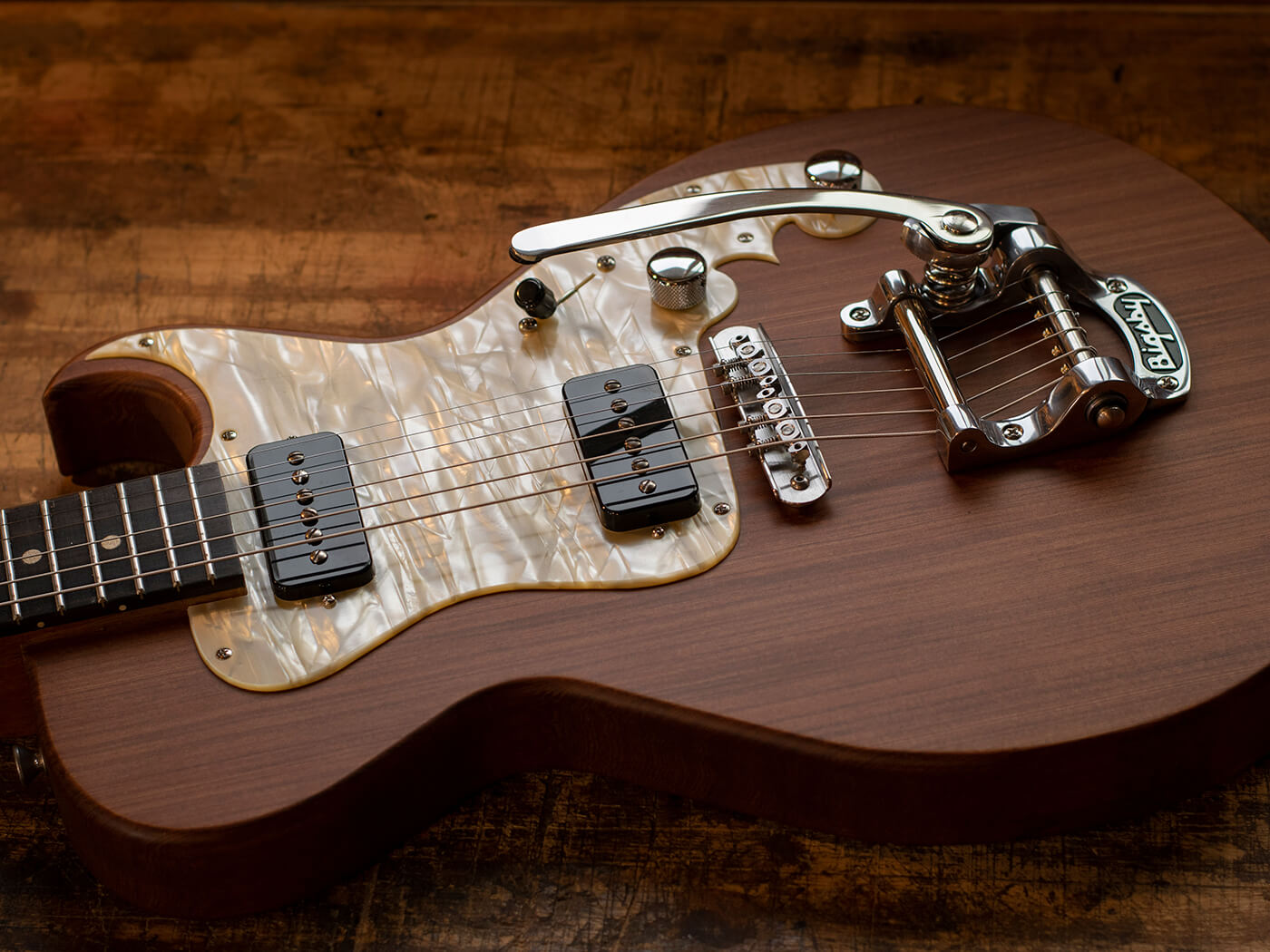
Restricted air space
While the Grez Mendocino and aptly named Semi-Hollowbody models sit squarely in a semi-acoustic/semi-hollow category that seems to be enjoying a renaissance these days, they have arrived there with arguably more consideration to the performance of such an instrument, rather than just another and slightly differently shaped casting of the old ES-335 mould. Everything in the design – from materials and material thicknesses, to air space and body proportions – has been thoroughly re-thought to maximise the potential of this breed of guitar.
“They’re designed from the ground up to be different,” says Grzebik. “Again, maybe they don’t look entirely different, but the construction is different, and the most important way they’re different – which is not revolutionary – is that they’re not laminated wood. This is the kind of material that you’d build an acoustic guitar from. High-quality solid wood, and my thought there is that as the instruments get a little thinner and smaller and have centre blocks, they begin to resonate less. Traditionally, when smaller-bodied semi-acoustic guitars have centre blocks there’s not a lot of air in there, so they’re really not all that lively. First off, just changing to a livelier wood brings a lot of life back to them.”
Grzebik likes to think of it on a spectrum: with the traditional Gibson L-5 archtop acoustic on the fully hollow acoustic end of the spectrum and the Les Paul on the solid end, many people would consider the ES-335 to be right in the middle as the semi-hollow archetype – except that it really isn’t.
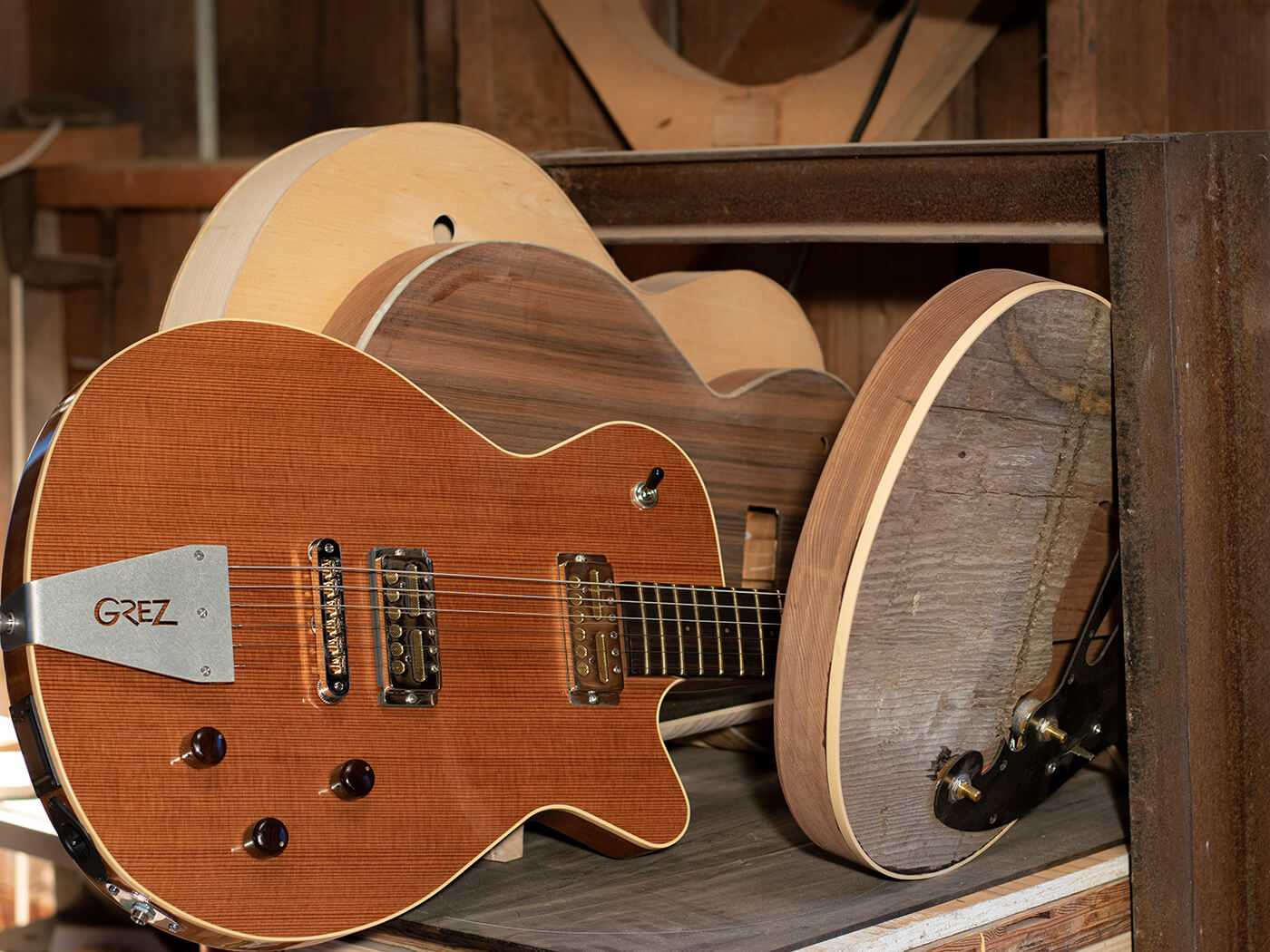
“In my opinion the ES-335 isn’t anywhere near the middle,” says Grzebik, “it’s far closer to a Les Paul than an L-5. So, my thought was to make a semi-hollowbody guitar that was really in the middle between an L-5 and a Les Paul. So, if you take the semi-hollowbody and just start by making it from acoustically lively woods, that helps a lot. And then the other thing that would be taken from acoustic guitar building and applied to semi-hollowbodies, is in acoustic guitar building you’re always flexing the top, right? You’re trying to get it to be either the right stiffness or flexibility for the application.
��“So, for instance, on a smaller acoustic guitar you would thin the top more, because the top is spanning a smaller distance and you want to maintain a certain flexibility, and if you don’t make the top thinner as the body gets smaller, it actually gets stiffer, which goes against the liveliness I’m trying to get. So, I’m actually thicknessing the tops of these semi-hollowbodies as you’d thickness the top of an acoustic guitar, so as it gets smaller it gets thinner, which maintains some liveliness. It doesn’t just become more and more dead as it gets smaller.”
In addition, following the same principles that avoid creating standing-wave-inducing square boxes for recording studios and live performance spaces, Grzebik consciously builds asymmetry into the bodies of the guitars, enabling the bass and treble sides to perform more specifically to their dual purposes.
“The bass side is usually larger, the treble side is smaller, which forces the body to have more complex resonance,” he adds. “I want the bass side to have a certain set of frequencies that are different from the treble side, to try to create something that has a more wide-ranging acoustical palette, or voice. From an engineering point of view it might be referred to as ‘spread resonance,’ where you have things that resonate at different frequencies and you couple them together and they affect each other.”
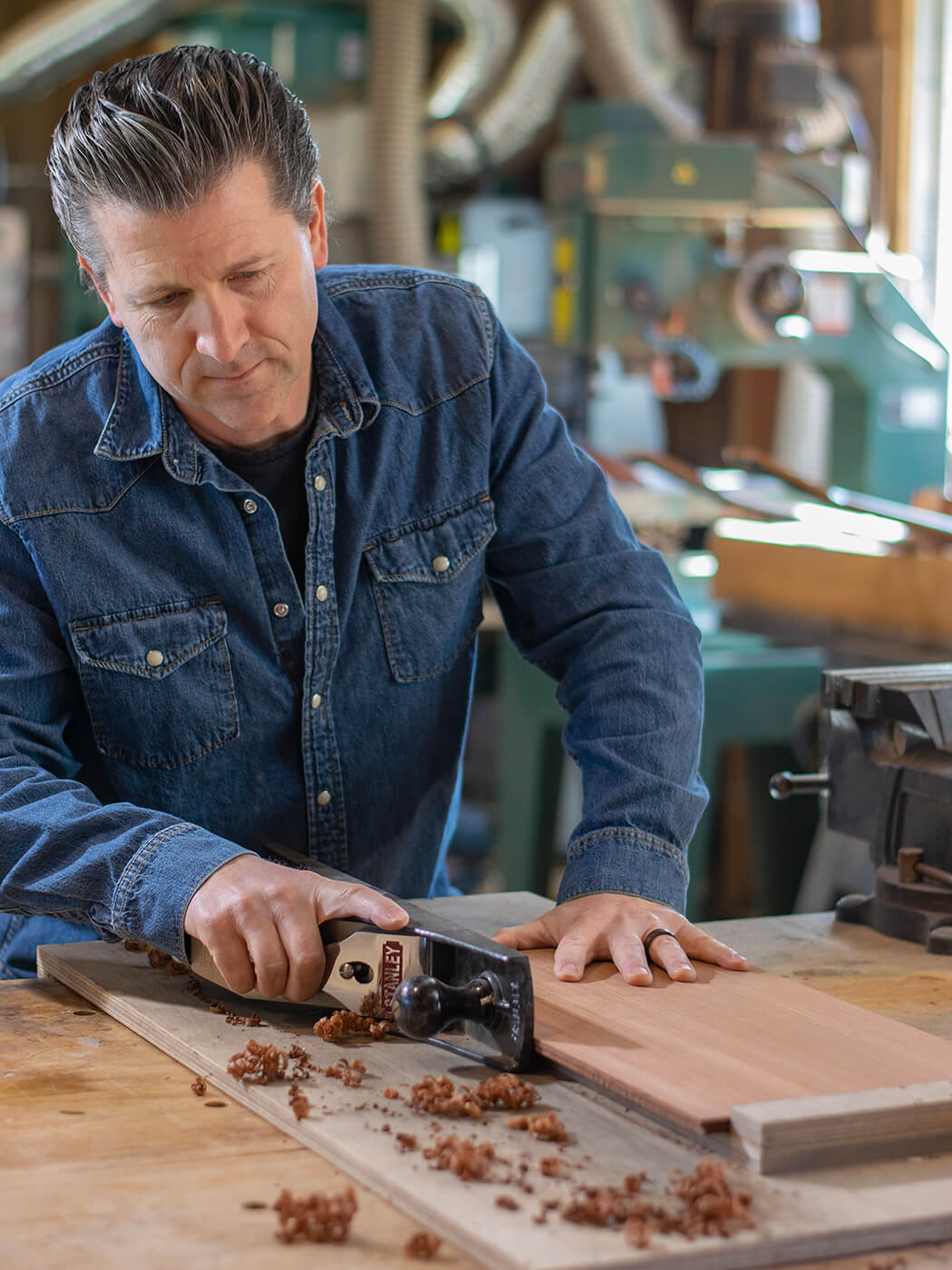
Growing old
Whatever the engineering considerations, so much of any guitar’s ultimate performance comes down to the raw materials, and like most considerate makers Grzebik puts a lot of thought into his wood selection. In that vein, he’s also particularly noted for tapping one of northern California’s great natural resources, though purely in an environmentally-conscious, second-hand manner.
“I definitely am a big user of Honduran mahogany still,” he begins. “And I know that’s something that may have to change down the road, but for the moment I’m still using a lot – my necks are one-piece Honduran mahogany necks, again going back to fewer glue joints being something I’m interested in, and the same with the Mendocino bodies, are Honduran mahogany, for both weight and voicing.
“But really it’s redwood that I use a lot of. That’s kind of my schtick a little bit, I suppose… always salvaged. The closest to new wood that I’ve ever used is an old tree that came down in a mudslide, that somebody collected and sawed into lumber. But again, it’s an old-grown tree, but that’s the closest to something living that I’ve ever had. Most of it takes a pit stop as a building before I get it.
“Up here in Northern California a hundred years ago everything was made from redwood, so it’s kind of everywhere. It takes some work to seek it out, and just because you find a piece of redwood doesn’t mean it’s suitable to build a guitar, but at least I have the opportunity to find a good piece.”
While many players might appreciate the rustic natural beauty of a coarsely grained piece of old-growth redwood, they likely have nowhere near the facility to describe its sound of this less-common tonewood as they do that of mahogany, maple, or rosewood.
“If you’re making a solidbody guitar,” Grzebik explains, “we kind of imagine a voice associated with mahogany or a voice associated with maple, which has frequencies that are being accentuated by those woods. And redwood feels to me to be a bit flatter, and quite a bit extended. There’s a little more low end and a little more top end, without any peaks in the middle. So it works well for solidbody guitars because it gives you a little bit of that vibration and liveliness that you get from an old guitar.
“People associate with it the properties that you get from old wood, because it’s so well dried out and the resins have cured fully, and there’s a vibrance and a liveliness to a really old piece of wood that redwood seems to have, either because it’s just the nature of it being redwood, or because it really is an old piece of wood, it’s only new to me because I just acquired it. It helps build guitars that when you pick them up you think, ‘Hey, there’s something here. This is not just a chunk of wood.’
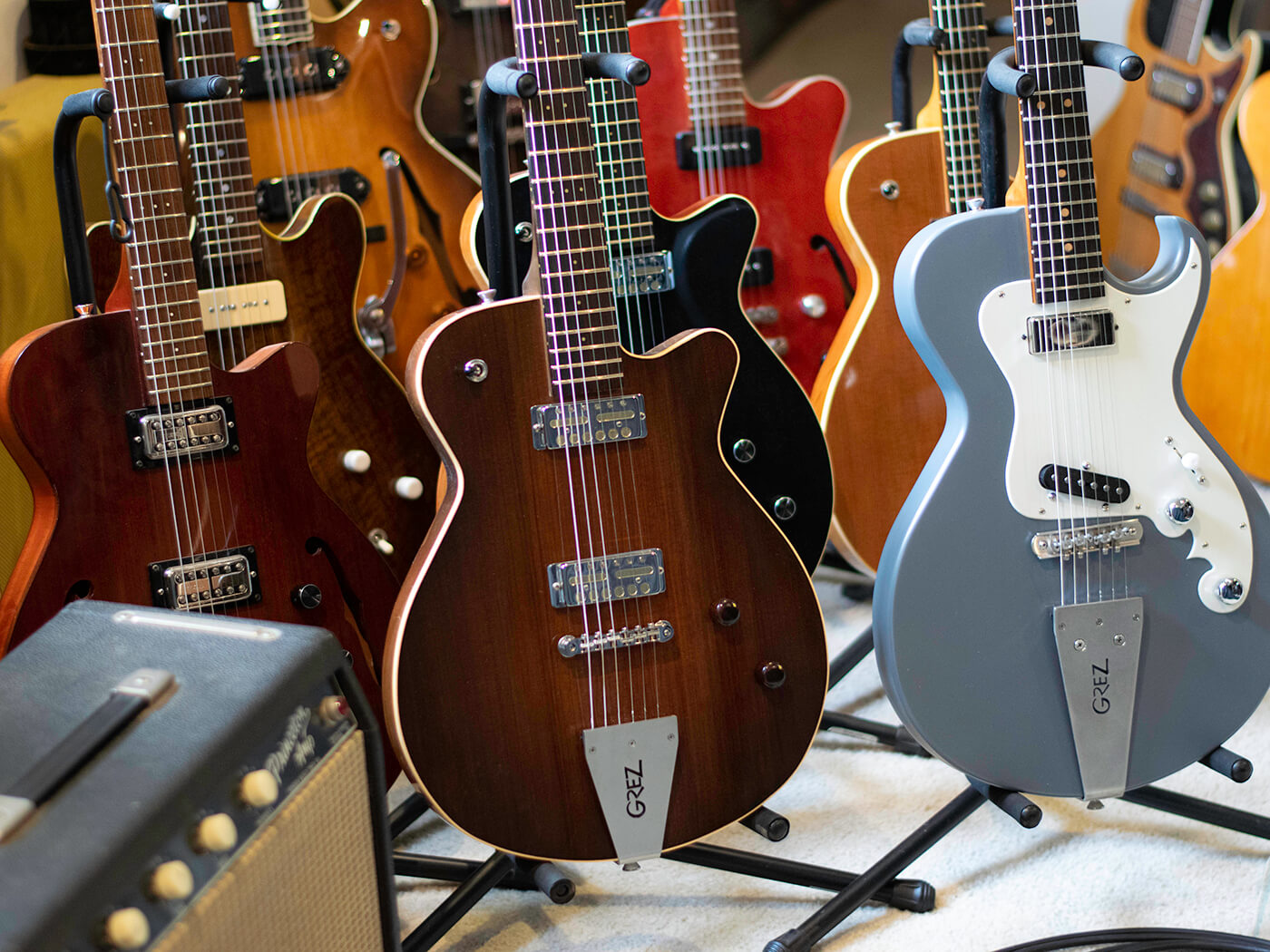
“And then from an acoustic guitar standpoint, if you wanted to compare it to spruce or cedar, people usually say generic things like, ‘Oh, it’s somewhere in between.’ I have generally found that it varies more than those species. So when I get redwood it’s often a matter of grading it. If it’s the absolute most perfect piece it may be used for acoustic guitars, maybe one step down for semi-hollowbody guitars, and a step down from that solidbody guitars. And all of that is still way above what somebody might consider furniture-grade. For my use, it’s got to be first-growth, old-growth redwood, and it’s always reclaimed.”
In addition, Grzebik is carefully selecting pickups and hardware to match and complement the properties of the wood, often – thought not exclusively – turning to gold foils in the redwood-bodied models because they “have a lot of chime and high end, so having a body that’s a little warmer to work together with the pickup choice kind of makes sense to me.”
Otherwise, while most of the non-vibrato-equipped guitars in the standard lineup receive the custom touch of a stylish Grez trapeze tailpiece – made from 12-gauge stainless steel with a laser-cut logo – Grzebik still makes entirely custom guitars on demand. And while these might be bespoke interpretations of any of his other models, they take the form of the hollowbody archtop electric designs Grez took on from the late builder R.C. Allen, who made guitars for Hank Thompson, Merle Travis, Joe Maphis and others.
“R.C. Allen had been making guitars since the 50s,” says Grzebik, “and he kind of hung out in the shop with Paul Bigsby and John Dopyera from the Dobro fame, and so he built everything from Bigsby-style guitars to banjos to archtop guitars, ukuleles, whatever, everything. And when he passed away I managed to get these tools from his shop through Deke Dickerson, a long-time friend, and started building archtops. It’s an interesting thing, I don’t think I would be building archtops had that not fallen into my lap.”
Visit grezguitars.com for more.
